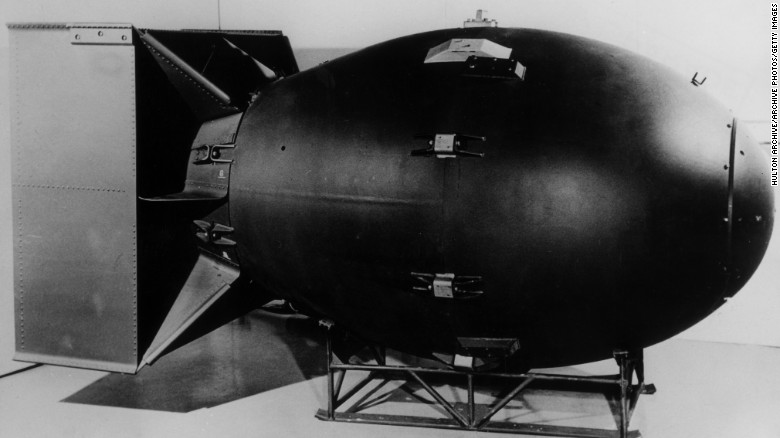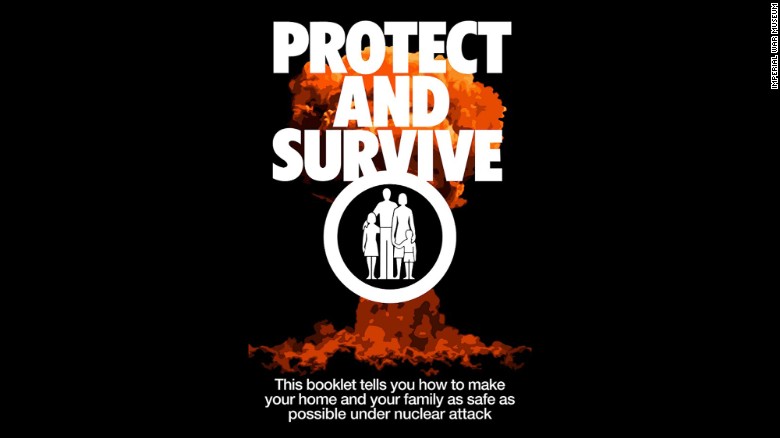
Opinion: One miscalculation away from nuclear holocaust
Opinion by David A. Andelman
Updated 4:17 AM ET, Thu August 4, 2022
David A. Andelman, a contributor to CNN, twice winner of the Deadline Club Award, is a chevalier of the French Legion of Honor, author of “A Red Line in the Sand: Diplomacy, Strategy, and the History of Wars That Might Still Happen” and blogs at Andelman Unleashed. He formerly was a correspondent for The New York Times and CBS News in Europe and Asia. The views expressed in this commentary are his own. View more opinion at CNN.
(CNN)United Nations Secretary-General Antonio Gutteres is hardly a global figure given to panic, or hyperbole for that matter. But rarely has he seemed quite so afraid.
“Humanity is just one misunderstanding, one miscalculation away from nuclear annihilation,” Gutteres said this week. The way he and a growing number of those who think deeply about nuclear issues and their consequences see it, the world is plunging headlong towards potential Armageddon, with little regard to the consequences of their actions, or inaction.
House Speaker Nancy Pelosi seems to have paid little heed to such fears as she moved blithely ahead with her visit to Taiwan in the face of dire warnings from the leadership of mainland China, whose arsenal of 350 nuclear weapons lies just across a narrow strait. And this in the context of bellicose words and actions from Russian President Vladimir Putin on Ukraine and Kim Jong Un’s ongoing nuclear rhetoric and actions in nearby North Korea.
Gutteres’s fears, of course, were broader and deeper than this single Asian flashpoint. He was addressing a world conference of the nations that have signed the Treaty on the Non-Proliferation of Nuclear Weapons — a gathering delayed by two years due to the Covid-19 pandemic.
Side view of the ‘Fat Man’ atomic bomb, the kind that the US dropped on Nagasaki, Japan, on August 9, 1945, killing thousands of people during the Second World War.
Signed on July 1, 1968, by 93 nations, and in force two years later, the treaty now has 191 adherents. Yet never has it seemed more vulnerable, if not more relevant, than today.
The context, as Gutteres observed, was that this year’s conference — the 10th since its signing — “occurs at a time of nuclear danger not seen since the height of the Cold War.”
Indeed, the very foundations of global security that have effectively guaranteed the peace since the explosion of the “Fat Man” plutonium device — the last ever detonated in battle over Nagasaki on August 9, 1945 — have been deeply eroded.
The United States was, and remains, the only nation ever to have detonated a nuclear weapon in a war. The Soviet Union tested its first device four years later.
In July 1959, then-French President Charles de Gaulle sent the Count Alexandre de Marenches, the co-author of our book, “The Fourth World War” to Washington, to ask US President Dwight Eisenhower to give France the secrets that would allow the French to join the nuclear club. Ike politely but firmly declined.
Still, in less than a year, France had exploded its first nuclear device, eight years after the British.
Russia was already en route to equalizing this balance. By the early 1960s, the Kremlin had deployed the first of what would be an arsenal of more than 3,000 nuclear weapons to Ukraine, where some of the first steps toward a Soviet bomb had been taken in Ukrainian institutes located in the now deeply contested cities of Kharkiv and Donetsk. More Soviet weapons then found their way to Belarus and Kazakhstan.
By the mid-1960s, on the western side of the Iron Curtain there were three nuclear powers (the US, Britain and France), on the eastern side, four ostensibily nuclear-armed states, though utterly controlled by the Kremlin. Effectively, there were just two nuclear blocs.
There are many who look back on that era as the good old days of nuclear confrontation — and with good reason. Each side, for decades, possessed enough nuclear weapons — as many as 41,000 for the USSR and 31,000 for the US at their respective peaks — to have utterly obliterated the other side, not to mention all life on earth. This led to the concept of Mutually Assured Destruction (MAD).
Since then, arms control agreements have reduced the size of these arsenals dramatically — to levels still able to incinerate the earth, but without reducing much of the tension. While arsenals have shrunk since the Cold War, the number of countries with nuclear weapons has proliferated.
How is it at all possible to have MAD when you have nuclear weapons in the hands of nine powers? (The countries in question are the US, Britain, France, Israel, Pakistan, India, Russia, China, and North Korea.) Within this group of nations, there are pockets of mutually assured destruction. Some 93% of all the world’s 13,900 nuclear weapons are still controlled by Washington and Moscow.
To a degree, MAD prevails there, and indeed the prospect of mutually assured destruction comprises a good part of what has deterred Pakistan and India from launching their arsenals at each other during any of three Indo-Pakistani wars or other regular confrontations across their contested borders.

The original cover of the UK government’s 1980 guide to surviving a nuclear attack.
A broader threat, though, has only expanded. How likely is it that given some existential challenge, Russia or even China, which arrived in the nuclear club in 1964, might not deploy a weapon of their own? Certainly, Russia has issued such a threat in Ukraine. Just weeks before its invasion of Ukraine, Russia conducted maneuvers with nuclear units, while Putin announced that his nuclear deterrent forces were being placed on a “special regime of alert.”
And then there are the peripheral nuclear powers. While most of the world has been preoccupied with Ukraine, Taiwan, and terrorist leaders in Afghanistan, North Korea has continued to launch missiles and threaten new rounds of nuclear tests. On Victory Day last month, Kim Jong Un warned he was “ready to mobilize” his nuclear deterrent.
Finally, we are potentially within weeks of a new round of escalations, this time involving Iran. Though Secretary of State Antony Blinken has embraced a return to the conference table to restore the nuclear accord that was restraining Iran’s headlong dash toward a nuclear weapon, there is little real evidence Iran is prepared to agree.
Indeed, on Monday the Biden administration unveiled a new round of sanctions targeting “illicit” support of the Iranian oil industry, which is already under crushing sanctions. And there are indications that the “breakout time” — the time needed for Iran to produce enough fissile material for a nuclear weapon — has shrunk to near-zero.
Should Iran test or even exhibit the capacity to test a nuclear weapon, its arch enemy Saudi Arabia has already indicated it will do all within its power to deploy its own. Indeed, it has fostered close relations with the nuclear programs of Pakistan and with China, whose appetite for foreign sources of oil knows few bounds.
It is hardly surprising that the UN Secretary-General has waxed so pessimistic. The speeches that followed his opening of the non-proliferation conference seemed scarcely calculated to return the genie to its nuclear bottle.
Blinken charged in his speech at the same conference that Russia is “engaged in reckless, dangerous nuclear saber-rattling” in Ukraine, while North Korea “is preparing to conduct its 7th nuclear test.” And as for Iran, it “remains on a path of nuclear escalation.”
“To escape the logic of fear,” Blinken concluded, should be the most immediate mission of all nations who’ve agreed to restrain the proliferation of nuclear arms.
Somehow, though, an even more worthwhile objective might just be for the world to find a way to turn back the clock from 2022 to 1962 or even 1982. These were terrifying years when, innocently, we practiced weekly duck-and-cover exercises under our little wooden desks in kindergarten, dug home fallout shelters in our backyards against an imminent nuclear attack.
But those very real and immediate threats led the nightly news, consumed the global dialogue, motivated every action by every world leader who understood that nuclear arms were, and should be, at the very top of priorities. They no longer are.
It is this fear that is at the heart of the Secretary-General’s pessimism — and should be at the heart of all of us
No comments:
Post a Comment